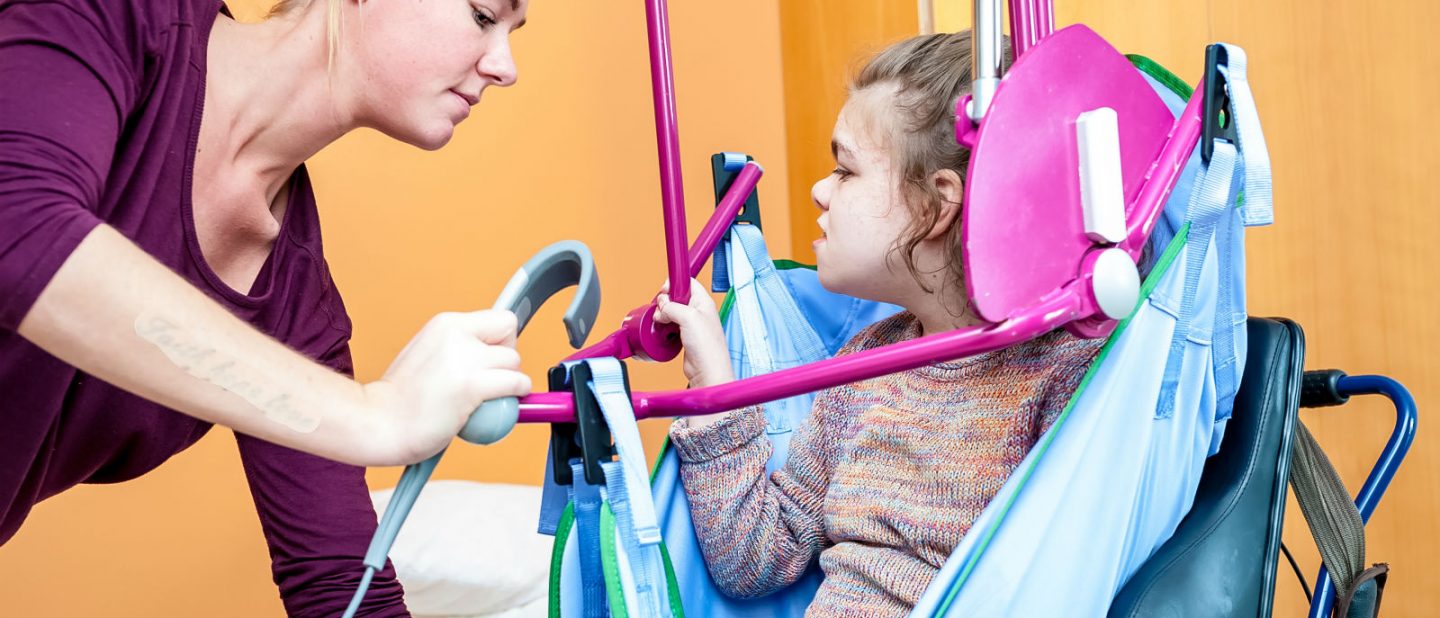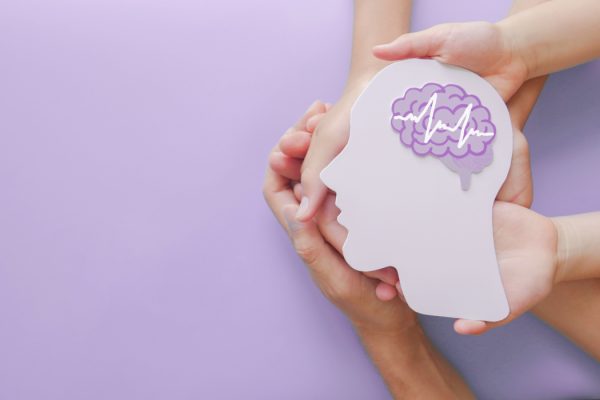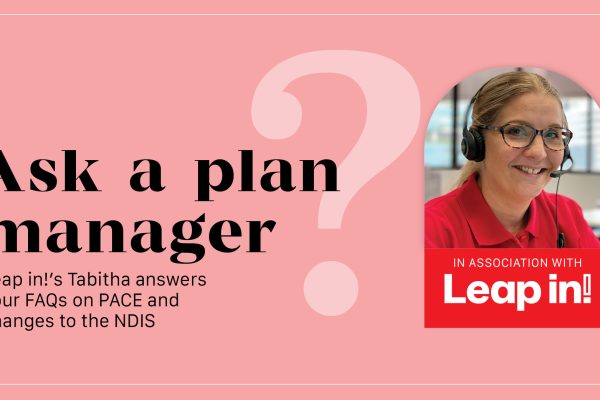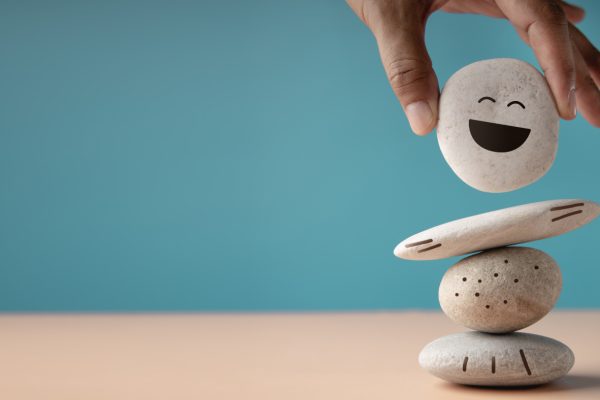
Physically managing older children
By Melissa Locke FACP, APAM, Specialist Paediatric Physiotherapist
It is said that we are more likely to injure our back when lifting because we can’t see the crazy positions we put it in. Combine this with caring for a child with extra needs, being constantly time poor, exercising infrequently and most likely chronic sleep deprivation and it’s no surprise that parents and care givers complain of back pain.
Lower back pain is not the only ailment common in families caring for a child with high physical, behavioural and/or medical needs. Our mid back suffers when we sit and lift, bend into a car to lift or sit leaning forward for prolonged periods. The rotator cuff muscles that support the shoulder can become injured or inflamed with repeated or awkward lifting of a child from a car seat, bath or chair. Twisting transfers when your foot is planted on the ground is a recipe for disaster for your knee.
Some injuries are unavoidable; recently one of my patient’s mums was injured when a therapy horse trampled her foot.
Back, neck and shoulder pain, however, adversely impact on your quality of life and wear you down.
Here are some key pointers to keep you well-tuned and keep muscular aches and pains at bay!
1. Regular sleep to allow time to rest, recharge and recover is ideal. Poor sleep is so common for carers of our children. If respite is available from a service provider, extended family member or friend, don’t refuse.
2. Exercise is important. It is now thought that any exercise no matter how brief is valuable.
3. Being less sedentary, if you can’t fit exercise into your day, also has positive health benefits and helps control musculoskeletal pain.
4. Avoid sustained postures for more than 30 minutes. Change position. Reverse the posture you have been in. Do some stretches or easy arm movements like windmills or head turns.
5. Set up your car seat to ensure that your wrists can rest on the top of the steering wheel comfortably; your thighs are supported by the seat and have two finger widths space between the front edge of the seat and the back of your knee; your lower back (lumbar) curve is well supported and your chin isn’t poked forward. This will help when you are a taxi service.
6. Meditation, relaxation, yoga or deep breathing exercises are fantastic ways to relax your muscles and allow them to recover. There are many free examples available on the internet.
7. When lifting try to keep your spine in a neutral position – that means keep the natural curves of your spine. Try to ensure that your child or the object you are lifting e.g. a wheelchair, is close to you. Gently brace your tummy muscles by drawing your belly button towards your spine and try to use your legs to lift. Bend at the knees.
8. Consider how to minimise the amount of lifting you need to do. This may mean transporting your child in their wheelchair from an earlier age – not always possible for families because of the expense of modified motor vehicles. Ramps to load wheelchairs into cars are a back saver.
9. The weight of equipment is also important to consider. As a physiotherapist I always consider who will be the family member who will most often lift the chair. Can the wheels come off easily? Is the frame as light as it can be without compromising support? Are the push handles at the right height? What wheel drive and tyre type best suits the family’s lifestyle?
10. Swivel seats that can come out of the car and close to ground level are becoming more common to allow easier transfers with greater independence for people with physical needs.
11. If your child can assist in getting into a booster seat, make sure they do by using a footstool for them to climb in and out of the car (that can be stored in the foot well behind the front seat). Often repositioning the booster seat into the middle of the back seat helps. Make sure the front seat is well forward to give you room to move when getting a child into the back seat.
12. Cars with sliding side doors are great for easier access when still using a booster seat for younger or smaller children. Place one foot in the car and one on the road or gutter. Face your child and lift them into the seat.
13. Maintaining or gaining the ability to take some weight for transfers (if able) is vital. This skill has positive health benefits for your child and helps to minimise the wear and tear on your back and joints.
14. Where possible try to access height adjustable and mobile equipment: change tables, beds, shower chairs.
15. Use a shower when you can, rather than the bath so that you are not lifting from a bent position. Showers often have easier access as well. It helps to transfer children in and out of shower chairs outside the shower.
16. High backed bumbo seats are great for younger children at shower time. They provide good support, are relatively inexpensive and easy to clean.
17. Try not to twist and lift at the same time. Moving your feet as you turn helps to avoid this action.
18. Avoid bending and twisting also.
19. Use another person, a sliding board or a hoist when you can.
20. Try to time care that requires lifting when two adults are home to help. If you do injure your back, it is best to keep moving as much as the pain will allow. Take paracetamol as required. A recent Australian study has shown movement within pain limits is the best way to manage an acute back injury. If your pain is not improving after 5-7 days it is important to seek medical advice.
Article by: Melissa Locke FACP, APAM, Specialist Paediatric Physiotherapist, Movement Solutions – Queenslandwww.movementsolutions.com.au







